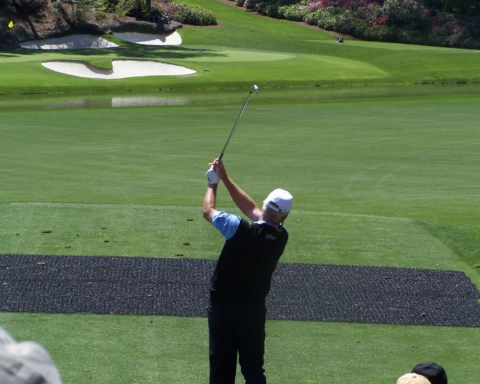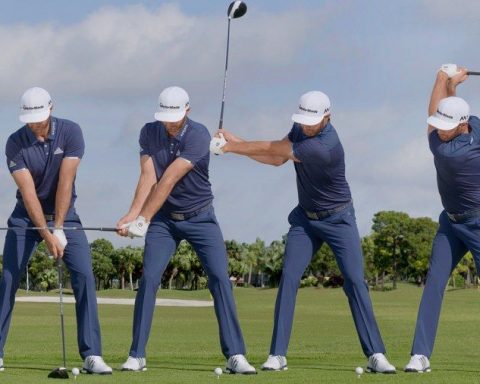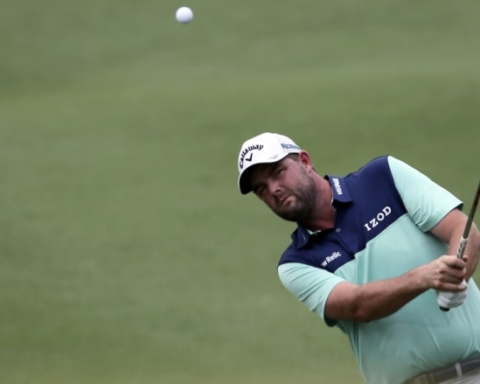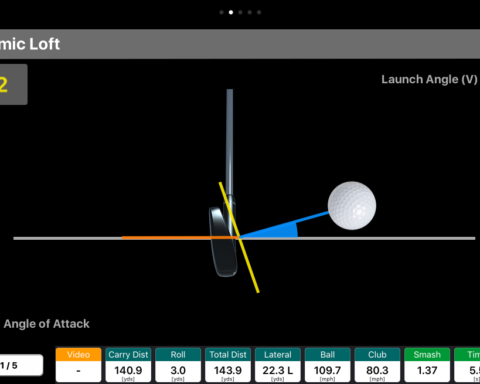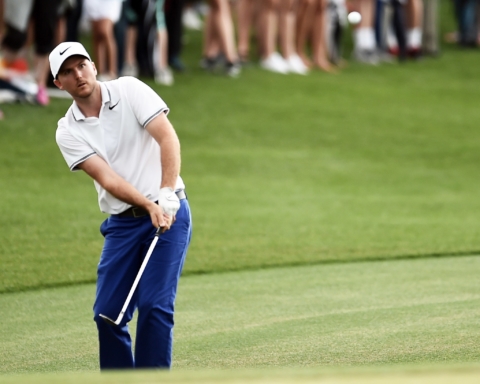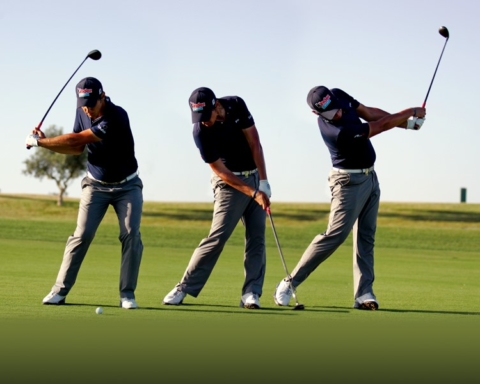I had the privileged of playing with a nice gentleman last week at Big Horn in Palm Desert. He had an unusual move in his swing swing that caused us to talke about his swing mechanics. Don’t feel 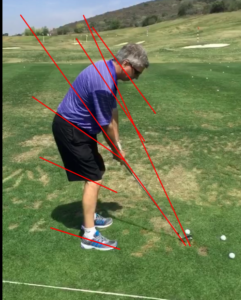 sorry for him, he shot 75 with and 11 handicap and beat my partner and I three ways that day. He is a good player but had a problem with a flying right elbow at the top of his swing. This is normally a problem caused by lack of flexibility in the right shoulder but this was not the case. The flying right elbow is a very common swing fault. This also reminded me of many so called “swing faults” I have seen that are really compensations for previous errors. The elbow flying at the top of the swing is actually his fix for the shaft plane being to low on the back swing.
sorry for him, he shot 75 with and 11 handicap and beat my partner and I three ways that day. He is a good player but had a problem with a flying right elbow at the top of his swing. This is normally a problem caused by lack of flexibility in the right shoulder but this was not the case. The flying right elbow is a very common swing fault. This also reminded me of many so called “swing faults” I have seen that are really compensations for previous errors. The elbow flying at the top of the swing is actually his fix for the shaft plane being to low on the back swing.
This is not that common of an error with better players. Swing or the shaft plane and hand plane with tour players stays very consistent during the swing. There are always exceptions for every rule like Jim Furyk but for the most part the best ball strikers on tour have a couple of things in common with their swings.
- Their hand plane can be traced on a line from the set up position until almost impact on or near the same line or path. That line works from the ball at set up through or near the right shoulder.
- The shaft plane with the left arm horizontal in the back and down swing will typically not deviate more than 13 degrees. To the naked eye it will appear that the shaft will be pointing on the target line from the ball on the back and down swing.
So the message is that the hands and shaft planes should stay consistent through the swing so you can strike the ball consistently.
After looking at his swing further when I looked at the video I took on the range I noticed how much he rolled open the face on the take away. He also took the club way inside causing the shaft plane to move under the plane line at the beginning of the swing. Here is the sequence from the one video I took before the round and my notes.
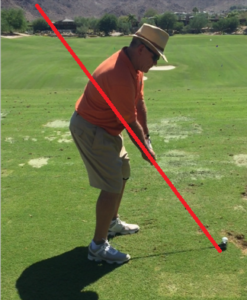
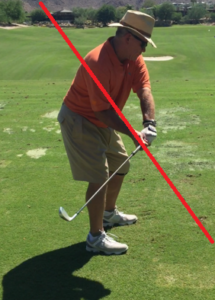
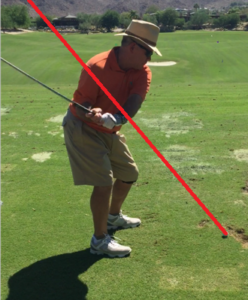
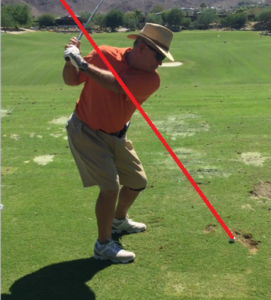
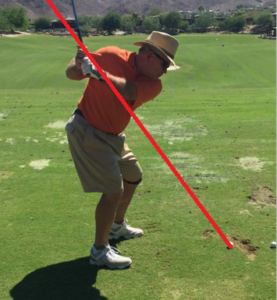
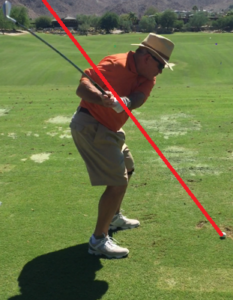
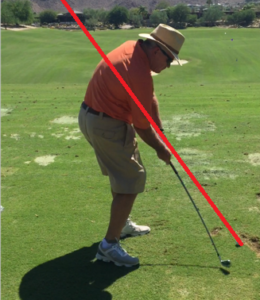
If I was working with this swing I would try to get the shaft plane much closer to the red line on the back swing and down swing. The first thing to correct is to stop opening the club face at the start of the back swing. This causes the shaft to dive inside the shaft plane which will need to then get more vertical at the top of the back swing. One of the best drill for this is the L drill;
The L Drill is standard at most golf schools you may attend. This drill takes the full swing and focuses on the most critical part of the swing. If we can make a good swing from when the left arm is horizontal on the back and start of the down swing until the right arm is horizontal in the follow through we will have a good swing. Taking out the extra parts of the swing really helps to focus on major fundamentals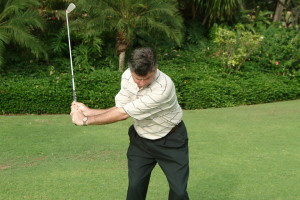
- Keeping left arm straight on back swing
- Bending right arm 90 degrees by the time the left arm is horizontal with the elbow pointing down or towards right hip
- Hand work on plane towards right shoulder
- Form a 90 angle between left forearm and club shaft
- Getting shaft plane pointed towards target line
- Downswing keep left elbow against body
- Extend right arm straight through impact
- Left arm bends 90 degrees on follow through
- Form 90 angle between club shaft and right arm
- Have hands and club shaft work on tile or angle through left shoulder
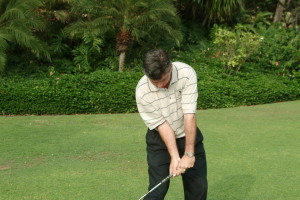
Back swing
Keep the left arm straight on the back swing taking the club back until left arm is horizontal. The right arm should bend 90 degrees and the elbow should point nearly directly down towards the right hip. The hands should work from the starting position on an arc to the right shoulder. Club shaft will point towards the target line. There will be a 90 angle between the shaft and left forearm and the right arm will also form a L.
Down swing
The club will start down using the left hip moving towards the target first. Shaft will stay pointed on the target line, left arm stays straight to start down swing towards impact. Left arm will not move forward towards the target in the downswing, this happens with the body turning. Left arm will stay across chest at impact. Right arm will extend at impact with palm rotating towards facing the ground.
Follow through
Right arm will stay extended, left elbow will stay against the body. Shaft will point towards target line, left arm will be bent 90 degrees and shaft will form an L, 90 angle between right form arm.
Best of luck
Jim Hartnett, PGA



